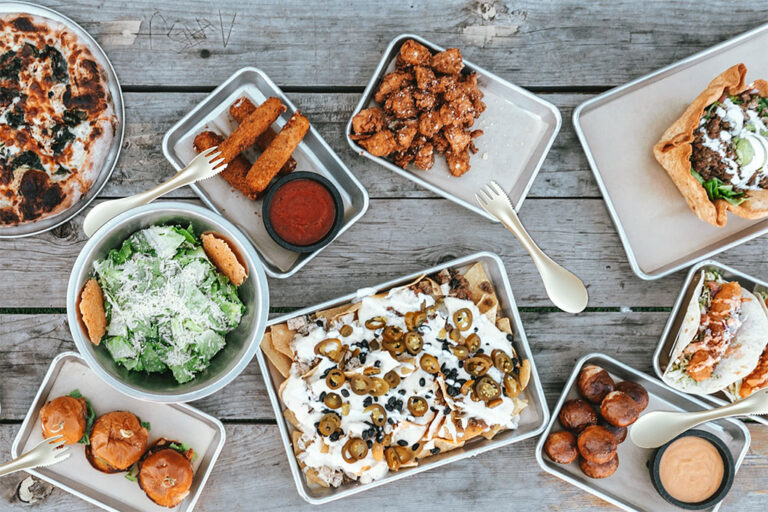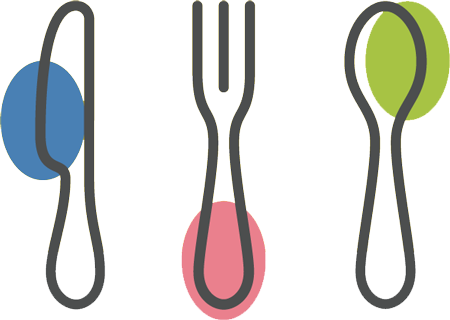How can something so good still be perceived negatively by some people? We’re talking about biodegradable food packaging and eco-friendly food packaging. Despite so many proven positives over the years, there are still misconceptions—especially when it comes to the use of food containers for things such as takeaway food
Biodegradable and compostable food packaging is gaining popularity, but misconceptions still exist. Let’s explore and debunk 10 common myths and tackle them with the truth!

Myth 1: Biodegradable packaging is more expensive.
Truth: In the past, the cost of eco-friendly materials was higher than conventional plastic packaging. However, as demand has increased, manufacturing capacities and efficiencies have dramatically improved. Today, biodegradable options like straws, cups, takeaway food containers, and food containers made from materials such as bagasse, PLA, and bamboo fibre are cost-competitive with traditional plastic versions and are now widely used as part of comprehensive food packaging solutions.
In fact, in a report published by Credence Research, “The Global Biodegradable Paper and Plastic Packaging Market generated revenue of around USD 10.1 billion in 2021 and is anticipated to grow at a CAGR of over 13.5% during the forecast period from 2022 to 2028 to reach around USD 21.6 billion in 2028.” Talk about sustainable AND cost-friendly!

Myth 2: The materials lack durability and structural integrity.
Truth: When produced properly using modern techniques, many compostable packaging materials can be quite durable and sturdy. For example, biodegradable paper straws are engineered with the optimal combination of flexibility, strength, and moisture resistance to withstand prolonged periods in drinks—often two hours or more. B
agasse takeout boxes and even noodle boxes designed for hot, saucy meals can maintain structural stability for extended periods. These plant-based options are part of a new generation of eco-friendly food packaging that delivers reliable performance while still breaking down efficiently in proper decomposition facilities.
Myth 3: Recyclable packaging is better and more eco-friendly.
Truth: While recycling is preferable to landfilling, it still takes substantial resources and energy to collect, sort, process, and manufacture new products from recycled materials. Compostable packaging, like paper cutlery or a compostable lid, circumvents this cycle entirely by naturally biodegrading instead. As a result, these solutions are often viewed as more environmentally responsible and form a key part of sustainable packaging initiatives across the food industry.

Myth 4: Biodegradable materials provide poor protection of food contents and liquid products.
Truth: In fact, many modern compostable plastics made from sources like plants or algae offer comparable protective and functional properties to conventional petroleum-based plastics. Whether used for straws, cups, clamshells, or containers for items like salad, compostable bioplastics help prevent leakage, moisture transmission, and contamination of food contents just as effectively as traditional plastics for the intended use periods.
Even paper straws are engineered to keep liquid contents sealed when manufactured properly. Choosing these materials through packaging online platforms also allows businesses to reduce their carbon footprint by opting for more sustainable supply chains.
Myth 5: There is no proof these materials actually biodegrade as claimed.
Truth: Extensive third-party testing by accredited laboratories provides ample verification that certified compostable materials break down in a timely manner when sent to commercial composting facilities. Testing protocols like ASTM D6400 simulate compost environments to confirm products biodegrade under real-world conditions. Whether it’s a coffee cup, a food box, or any other certified item made from renewable resources, full-scale composters monitor and report on biodegradation rates for approved packaging products. So there is reliable data demonstrating certified compostable packaging decomposes as promised.
Myth 6: Biodegradable packaging leaves behind toxic or harmful residues.
Truth: Reputable compostable packaging products that are Certified Compostable undergo rigorous testing to ensure no toxic residues or by-products remain after the materials decompose. Many trusted food containers made from sugarcane, for example, meet these strict standards while offering a safe, eco-friendly alternative. However, some products merely labelled as “biodegradable” may still contain PVCs, BPAs, or other harmful ingredients that could persist. Seeking out reputably certified compostable packaging not only helps avoid this risk but is also increasingly accessible through suppliers offering next day delivery.

Myth 7: It’s too difficult to implement biodegradable packaging on a large scale.
Truth: In fact, major brands, retailers, restaurants and even entire cities have already begun adopting eco-friendly compostable packaging in large volumes by partnering with reputable suppliers that offer scalable solutions. With proper planning and sourcing, it is quite feasible to make the switch to certified compostable materials across large operations. As more organizations demand sustainable options, production capacity is also rapidly scaling up to meet needs.
Myth 8: There are no options for food contact applications that require sanitization.
Truth: Many compostable materials can in fact be safely sanitized for direct food contact when required. For example, disposable cups, plates and bowls made from plant fibers are often coated or treated with an extra barrier making them heat-resistant and suitable for disinfecting at high temperatures up to 180°F or more. This enables safe use with hot foods while still being fully compostable. Even compostable food wrappers and boats can be safely sanitized thanks to advanced manufacturing processes.
Now that these common myths are busted, it is clear biodegradable and compostable food packaging has come a very long way. As sustainability becomes increasingly important, the adoption of eco-friendly packaging will surely continue accelerating with more education and awareness.
Ready to dive into the world of sustainable and cost-friendly biodegradable paper products? Take that first step here with Hello Straw.





